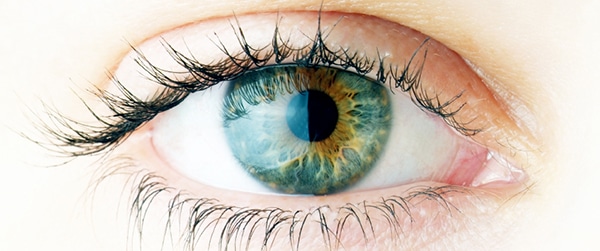The lacrimal system plays an important role in maintaining the health and function of the eyes. Tears produced by the lacrimal glands help to keep the eyes moist, lubricated, and protected against infections. Tears also contain important enzymes and proteins that help to fight off bacteria and other pathogens.
When the lacrimal system becomes blocked or obstructed, it can lead to a range of problems such as excessive tearing, eye infections, and other complications. Common causes of lacrimal system blockages include congenital abnormalities, trauma, and age-related changes.
Lacrimal surgery is typically recommended when other treatments, such as medications or non-surgical interventions like eye drops have failed to solve the problems. The specific type of lacrimal surgery that is recommended will depend on the underlying cause of the blockage and the extent of the problem.
Types of Lacrimal Surgery
Typically, any surgery performed on the lacrimal system falls under the umbrella of lacrimal surgery, including includes all the structures involved in producing and draining tears. There are many different lacrimal surgeries that can be performed on different patients for different reasons
The specific procedure for each surgery is different depending on the condition being treated as well as an individual’s needs. What’s important is to work with a specialized clinic like The Esthetic Clinics with specialized a plastic surgeon like Dr. Debraj Shome.
Some common types of lacrimal surgery are;
- Dacryocystorhinostomy (DCR)
DCR is a surgical procedure performed to treat nasolacrimal duct obstruction, a condition that can cause chronic tearing and recurrent infections. There are two techniques that a surgeon can use to perform the procedure.
They can use the external approach, where an incision is made near the nose, or the endoscopic approach, where they insert a thin tube with a camera through the nostrils to complete the treatment. The approach chosen depends on a patient’s specified and the surgeon’s preferences.
Regardless, the procedure aims to create a new passage between the lacrimal sac and the nasal cavity to bypass the obstruction and allow tears to drain properly.
- Canalicular laceration repair
This is performed to repair a tear or laceration in the canaliculi (the small ducts that drain tears from the eye into the lacrimal sac). This injury can be caused by traumatic incidents like accidents and can cause tearing discharge, and eye irritation.
During the procedure, the surgeon would suture the torn edges of the canaliculus together with the aim of restoring the canalicular to its normal anatomy and functions. Sometimes they may need to place a stent or silicone tube in the canaliculus to help support the repair and prevent scarring.
- Jones tube placement
This procedure is done to bypass an obstruction in the nasolacrimal duct. During the procedure, the surgeon uses a small tube, usually made of silicone or glass called Jones Tube. He makes an incision in the side of the nose, through which he places this tube into the lacrimal system to bypass the obstruction in the nasolacrimal duct.
The tube is designed to provide a new pathway for tears to drain from the eye into the nasal cavity. To prevent it from dislodging or shifting, the tube is secured in place with sutures or other surgical devices.
Doctors often recommend the Jones tube placement treatment for patients with severe or recurrent nasolacrimal duct obstructions that cannot be corrected with other treatments.
It is important that a patient consults with a qualified ophthalmologist or plastic surgeon like Dr. Debraj Shome to determine if Jones tube placement is an appropriate treatment option for their specific case.
- Probing and irrigation
Probing and irrigation are usually done to open a blocked tear duct. The surgeon makes an incision through which he inserts a thin probe into the lacrimal system to irrigate the area with saline solution and clear any blockages.
Probing and irrigation is considered minimally invasive procedure and uses local anesthesia to make the process painless and more comfortable for the patient. Patients are treated on an outpatient basis and can return home the same day.
After the procedure, some patients experience some tearing, and discharge, while others experience mild discomfort. These symptoms typically these with time and can be managed by the use of eye drops and other medications may be prescribed to help manage these symptoms and promote healing.
While the treatment is common for young adults and infants, it may also be recommended for adults under different circumstances. It is generally considered safe and effective, but like with every other similar procedure, it may also cause some complications.
Patients should discuss all of thee with their surgeon right at the initial consultation stage to ensure minimal risks, optimal results, and expectations are met.
- Conjunctivodacryocystorhinostomy (CDCR)
CDCR is quite similar to DCR (Dacryocystorhinostomy), only that this is performed through the conjunctiva (the thin membrane that lines the inside of the eyelid). The goal of the procedure is the same as that of DCR; to bypass an obstruction in the nasolacrimal duct by creating a new passage between the lacrimal sac and the nasal cavity. This helps prevent symptoms such as tearing and recurrent infections caused by the obstruction
The technique is also most preferred in cases where there is scarring around the lacrimal sac, and traditional DCR is more challenging or risky. It may also be recommended for patients who have previously undergone unsuccessful DCR or other lacrimal surgeries.
During a CDCR procedure, the surgeon makes a small incision on the conjunctiva and identifies the lacrimal sac. He then creates a new passage between the lacrimal sac and the nasal cavity. This process can be done with or without the use of stents or tubes as with DCR.
- Lester Jones Tube Placement
The only major difference between Jones Tube Placement and Lester Jones Tube Placement is that the latter uses a larger diameter Jones Tube. The treatment is usually done when the alternatives such as DCR and Jones Tube wouldn’t work.
During the procedure, the surgeon makes an incision in the side of the nose through which he will insert a larger diameter Jones Tube in the lacrimal system to bypass severe obstructions or anatomical defects.
Similar to the traditional Jones Tube, the Lester Jones tube is made of silicone or glass only that compared to the former, it is larger in diameter and is designed to bypass more severe obstructions in the lacrimal system.
Once the procedure is done, the surgeon then secures the tube with sutures or other surgical techniques to prevent it from moving.
Benefits of Lacrimal Surgery
Lacrimal surgery involves creating a new drainage passage to allow tears to flow from the eye to the nose, without complications. This comes with a lot of benefits some of which are;
Improved tear drainage: When a tear duct is blocked, it can cause a lack of tears on the surface of the eye. This may cause symptoms such as dryness in the eyes, discomfort, and potential for corneal damage. Lacrimal surgery can improve tear drainage and promote the production of tears to reduce these symptoms and improve the overall health of the eyes.
Reduced risk of infection: When tears are obstructed by a blockage and backup, they can accumulate and create a favorable environment for bacteria to grow. This can cause severe infections of the eye and the surrounding tissues. Lacrimal surgery can restore normal tear drainage, and reduce these risks.
Enhanced vision: A blocked tear duct can cause excessive tearing which in turn can cause blurry vision, making it difficult to see clearly. If a lacrimal surgery is performed, it can restore the normal flow of tears and enhance vision.
Note that in cases where vision is impacted by other eye conditions, lacrimal surgery may not be the best option. In this case, it is important to seek help from a specialized professional for better treatment recommendations.
Improved quality of life: Excessive tearing and chronic eye infections are no fun. These symptoms can cause discomfort, irritation, and pain, and can put patients in uncomfortable situations. For example, it may be socially embarrassing for a person to constantly have tears streaming down their face, especially in public.
Lacrimal surgery can restore normal functionality of the eyes and tear drainage, and also prevent infections and the risk of other medical problems that may be caused by these symptoms.
This improves comfort, self-confidence, and overall appearance and quality of life.
Long-term benefits: Most patients seek temporary solutions such as eye drops because they think it is easy to probably cheap. However, f the symptoms are severe, these methods may not be a suitable solution. When a patient undergoes lacrimal surgery, it addresses the underlying problems, hence providing lasting relief.
While there are always complications with similar procedures such as the possibility of recurrence after the surgery, most of the patients who undergo successful lacrimal surgery do enjoy long-term benefits and relief.
Risks and Complications of Lacrimal Surgery
When a patient works with a reputable clinic such as The Esthetic Clinics, the plastic surgeon ( Dr. Debraj Shome)or practitioner handling their case ensures they are fully aware of all the risks associated with the surgery as much as they are aware of the benefits and the good things.
Some of the risks and complications of lacrimal surgery include:
Infection: Infection is probably one of the most common risks of procedures and surgeries, especially around the area of treatment. Lacrimal surgery is done on the tear drainage system, near the eyes and the nose, which are sensitive areas and naturally populated with bacteria.
To minimize the risk of infection during the procedure, surgeons should take precautions such as using sterile instruments and dressings, washing their hands and the surgical area thoroughly, and administering antibiotics before and after surgery.
Patients should also play their part by following all the doctor’s instructions pre and post-surgery to help prevent infections. They may be asked to avoid touching their eyes or face with their hands, keep the surgical site clean and dry, and take the prescribed medications as directed.
Bleeding: Since surgeries involve cutting and making incisions on the skin, it is common for many patients to experience bleeding during and/ or after the surgery. This may require additional intervention to manage.
In most cases, bleeding during and after a lacrimal surgery is usually mild and easily manageable with pressure and medications. In rare cases where bleeding is more severe, additional intervention such as surgical revision or a blood transfusion may be needed.
Scarring: Scarring occurs when there remains a scar long after the surgery, marking the surgical site. Some scars are mild and less noticeable while others are visible. This may affect the general appearance of the eye.
Scaring is caused during the surgery when the surgeon makes incisions in the area around the tear drainage system, to access and repair the affected tissues, which might leave scars after healing
The extent and visibility of scarring varies depending on a number of factors, such as the individual’s skin type, the size and location of the incisions, and their healing process. How they take care of themselves after the surgery may also contribute to scarring.
Damage to surrounding structures: There is also the risk of the surrounding structures such as the eyeball and facial nerves getting damaged. The tear drainage system is located close to other important structures, and manipulation during surgery can cause accidental damage.
If any damage does occur, the severity of the damage and the extent of the resulting complications can vary. For example, if the eyeballs are damaged, it may result in vision loss, and when the facial nerves are damaged, it can result in facial paralysis or weakness.
In some cases, additional surgery or other treatments may be necessary to address these damages and any other resulting complications.
Failure of the surgery: This is not a common cause if patients work with The Esthetic Clinics and/ or with reputable plastic surgeons like Dr. Debraj Shome. In rare cases, there is a risk that the surgery may fail to treat the underlying issues of the tear drainage system and restore normal functions of the system.
In other cases, the surgery may initially seem to be successful, only for the condition to recur at a later time, leading to continued symptoms such as excessive tearing or recurrent infections
If the surgery is not successful, additional treatments like revision surgery, medications, and other interventions may be needed.
Recurrence of the condition: The tear drainage system can be affected by conditions such as blockages, infections, or anatomical abnormalities. Lacrimal surgery often successfully addresses these conditions, but there is always a risk that the condition may recur in the future.
Recurrence of the symptoms may be influenced by factors such as the severity and extent of the underlying condition, the individual’s overall health, as well as the surgical technique used. Some conditions are more likely to recur than others.
To minimize this risk, patients are urged to openly discuss any allergies they may have, share their medical or health history, inform their surgeon about any medication or supplements they are taking, or any other thing that may sabotage the effects of the surgery.
Dry eye: The tear drainage system plays an important role in maintaining the balance of tears on the surface of the eye, and when it is disrupted due to surgery, there is a risk of reduced tear production, which may cause dry eye syndrome.
Patients suffering from dry eye syndrome can experience a range of symptoms, including dryness, irritation, redness, and blurred vision. In some severe cases, it may also increase the risk of eye infections or other complications.
Persistent tearing: When the surgery doesn’t completely resolve the issue, patients may continue to experience excessive tearing. This may occur due to factors such as incomplete removal of obstructions or blockages, damage to the tear drainage system during surgery, or other underlying conditions that were not fully addressed by the procedure.
Need for additional surgery: If the procedure does not address all the underlying problems that it was meant to or causes other complications, additional surgery may be required to address the issues and minimize the risk of further complications. There are many reasons why this may happen, including infections, bleeding, scarring, and damage to surrounding structures during the initial surgery.
The need for additional surgery depends on a variety of factors such as the severity and extent of the complications or residual issues and the individual’s overall health. In some cases, additional surgery may be performed shortly after the initial procedure, while in other cases it may be recommended after a period of observation or conservative treatment.
How to Prevent or Minimize the Risk of Complications
For the most part, it is the duty and responsibility of the plastic surgeon to ensure that the risk of complications is minimized and that the surgery is successful. However, some complications such as bleeding and infections can still occur.
Patients also have a part to play to ensure minimal complications and optimal results. Some tips to patients for preventing and minimizing the risk of complications during and after surgery include;
- Cut out some habits such as smoking and drinking alcohol as directed by the surgeon
- Take enough rest after the surgery
- Avoid strenuous activities and heavy exercising that may sabotage the results of the surgery
- Inform the surgeon of any medications and supplements previously prescribed, as well as any other concerning health or medical issues
- Don’t touch, scratch, or rub the surgical site
- Keep the surgical site clean and dry to minimize the risk of infections and bleeding
- Attend all the follow-up appointments to monitor the healing process
- Immediately report any abnormal issues to the surgeon before it turns out to be a big risk
- Follow all the post-surgical instructions


